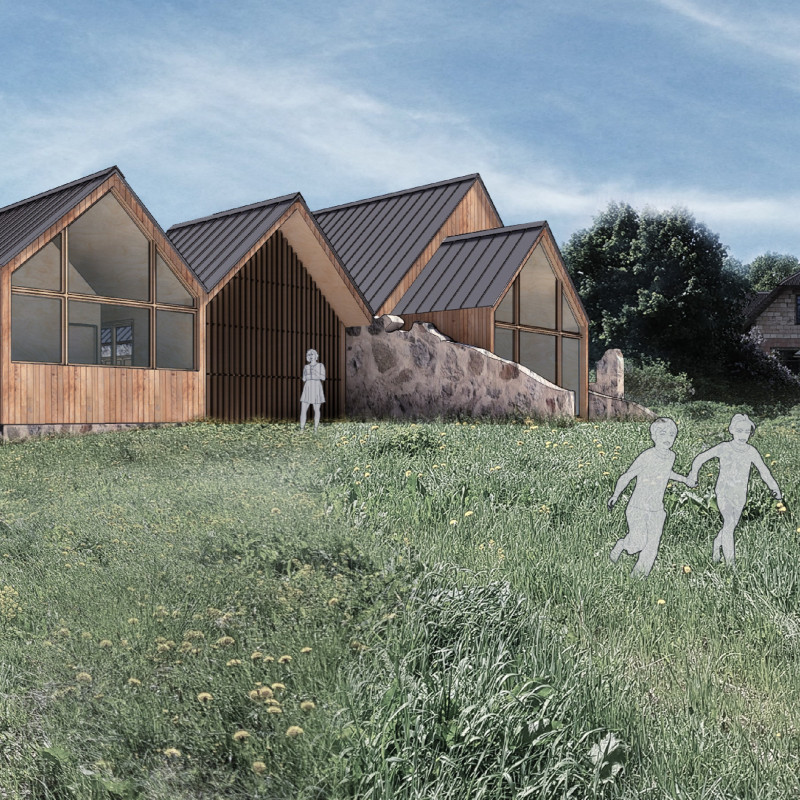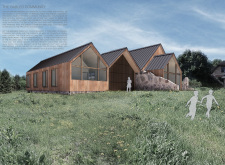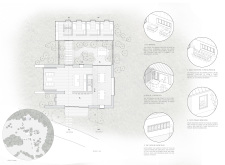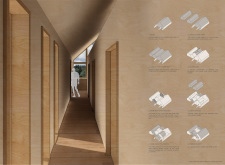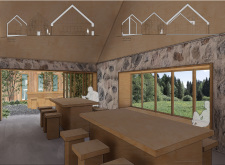5 key facts about this project
The design features a series of interconnected gabled structures that serve various functions, including communal areas for tea production, gathering spaces, and flexible multipurpose rooms. Each building exemplifies a commitment to bringing people together while also providing an immersive experience inherent in the art of tea making. The gabled roofs are particularly noteworthy, providing a distinctive visual characteristic that resonates with traditional architectural forms while facilitating passive ventilation and natural light within the interiors.
Materiality is a key component of the design, with a focus on natural and locally sourced materials that reflect the surrounding environment. The use of wood is prevalent, providing warmth and a tactile quality to both the interiors and exteriors of the structures. Stone elements are strategically incorporated to instill a sense of permanence and connection to the earth, complementing the lightweight nature of the wood. Glass is utilized extensively to create expansive openings that blur the boundaries between indoor and outdoor spaces, allowing natural light to fill the interiors and enhancing the overall atmosphere of openness and serenity. The integration of metal roofing elements adds a contemporary twist while ensuring durability across various weather conditions.
Inside, the design prioritizes an easy flow between spaces, fostering interaction among visitors. Key features include communal tables in the tea-making area, which invite participation and collaboration. This focus on communal engagement is further reinforced by the central courtyard that serves as a gathering space, encouraging visitors to connect with their surroundings and each other. The layout supports a variety of activities, from community events to intimate gatherings, all while remaining anchored to the tea-making ethos that drives the project.
The Gabled Community is unique in its approach to integrating traditional cultural practices with modern architectural principles. By emphasizing the significance of tea making as a shared experience, the design infuses the space with purpose and meaning. The architectural outcome presents not just a functional building but also a setting that encourages mindfulness, relaxation, and the appreciation of craft.
For those interested in delving deeper into the intricacies of this project, it is beneficial to explore the architectural plans, architectural sections, and various architectural designs that detail the thoughtful ideas driving this initiative. By taking the time to review these elements, readers can gain a more comprehensive understanding of how the design effectively embodies the principles of community, sustainability, and connectivity to the land.


